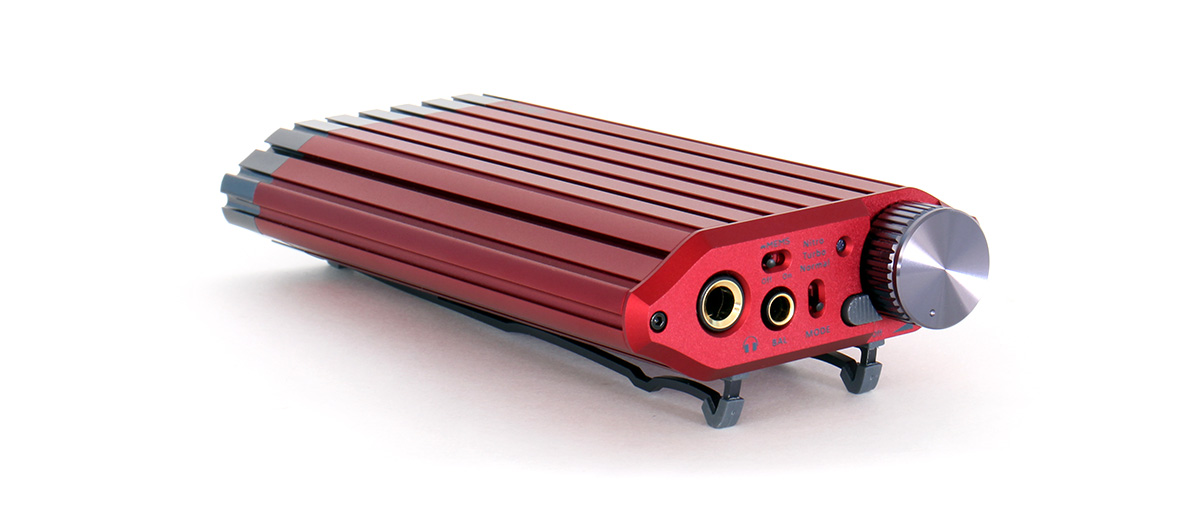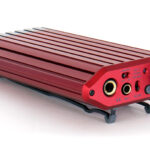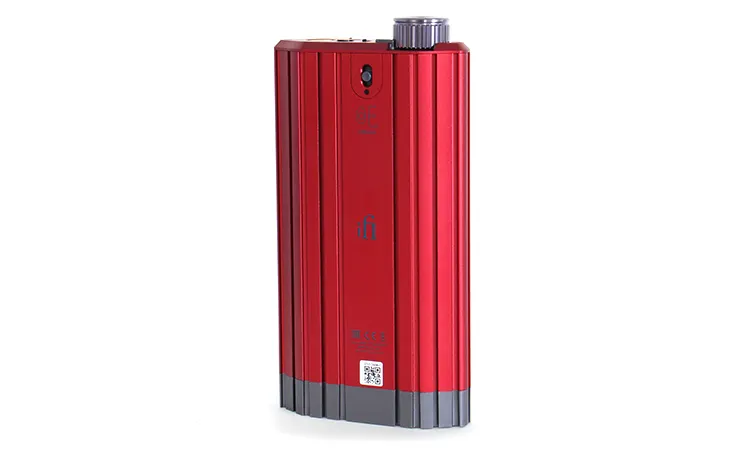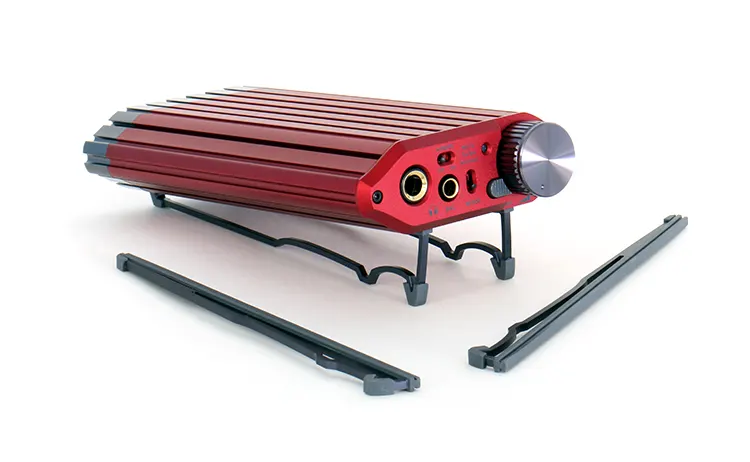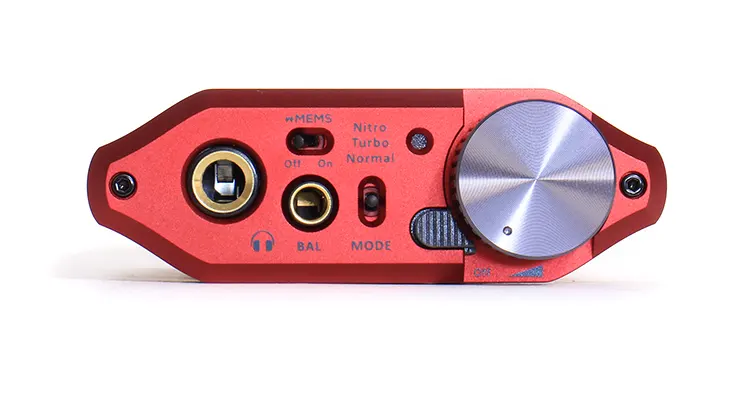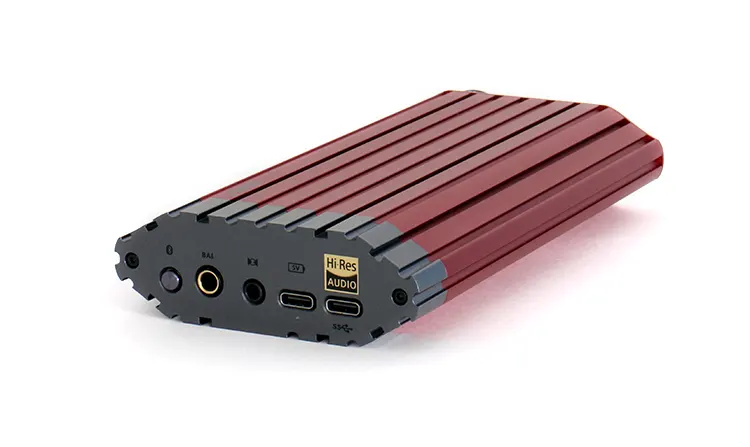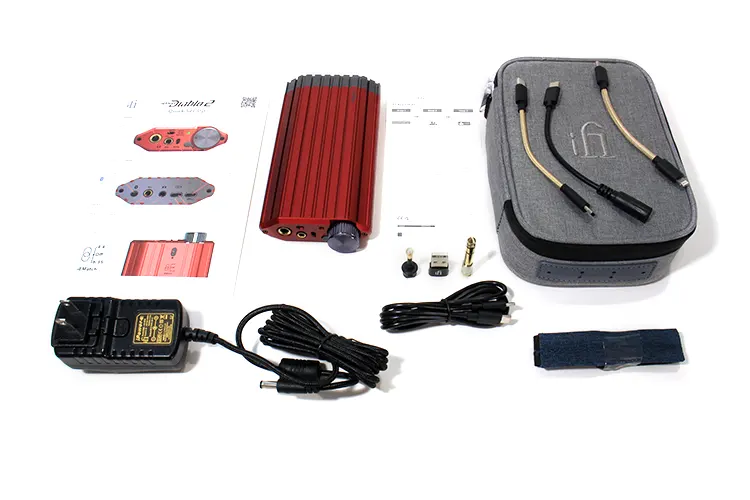We review the iFi Audio iDSD Diablo 2, which is a 2nd gen portable DAC and headphone amplifier with Bluetooth 5.4 aptX Lossless decoding capability. It is priced at $1299.
Disclaimer: We received this sample in exchange for our honest opinion. Headfonics is an independent website with no affiliate links or services. We thank iFi Audio for their support.
More information about iFi Audio products that we have previously covered on Headfonics can be found here.
Please keep in mind that this post adheres to our most recent scoring guidelines, which you can find here.
The iFi Audio iDSD Diablo has been one of my staples and go-to pieces of gear since it was introduced. It’s an AIO DAC amplifier combo that’s compact, simple to use, and has an excellent sound profile that only an esoteric component can surpass.
It surprisingly has connectivity better than specified by iFi Audio and we were one of the first to disclose the bi-functions of each plug since they can act as inputs or outputs, depending on what was detected as the source. The portable device was gorgeously wrapped inside a compact, fiery red package.
So, when the iDSD Diablo 2 tech lowdown dropped, it immediately caught my eye. It has redesigned cosmetics plus it has an additional list of features that are not found in the original version.
But besides the added features, I was mostly intrigued by the fact that this model is somewhat future-proof since it includes xMEMS capability.
I can’t wait to get my hands on some xMEMS accompanying gear but for now, let’s talk about all the rest.
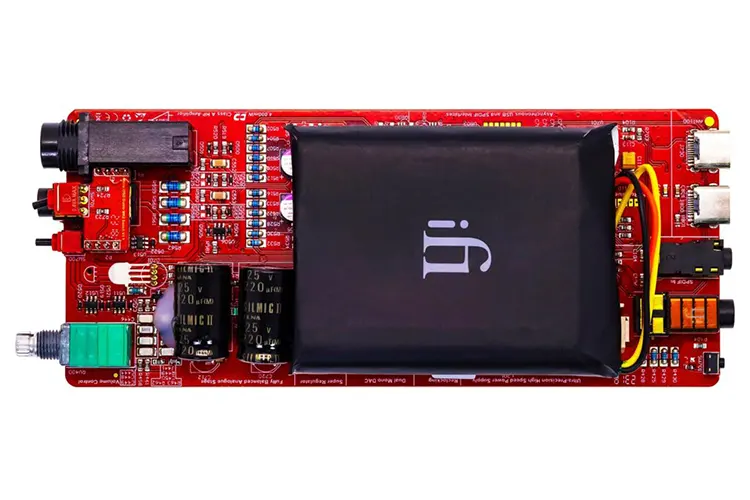
Tech Highlights
Let’s get the unchanged aspects out of the way first. The 16-core XMOS processor remains along with iFi Audio’s custom OV series operational amplifiers, and the customized Burr Brown DAC section.
There’s also the list of high-quality selections of parts like TDK, Vishay, and Murata capacitors, Panasonic OS-CON capacitors, and Texas Instruments low noise ICs just to name some.
The PureWave balanced, negative feedback, and differential mono design also carry over although taking a closer look at the overall circuitry, it seems the part count is physically higher on the board, and denser mounting was implemented.
Where did the circuitry changes take place? The largest visual circuitry change seems to be the addition of some large 220µf capacitors within the circuitry. There also seem to be some rearrangements with filter stages and battery management circuitry but that’s about it.
The rest of the changes are major. Bluetooth receiving inclusion is one of them. The other is the inclusion of an xMEMS driving capability switch on the front panel.
Another welcomed addition is the iEMatch feature that seems to remedy the slight channel imbalance which is common in these analog volume pots.
Decoding
The iFi Audio iDSD Diablo 2 is a capable little devil in the digital realm. It can run most digital formats out there starting with MQA hardware unfolding. It also handles ‘Bitperfect’ PCM and DSD at up to 768kHz and DSD512.
On the Bluetooth front, the Qualcomm QCC518x BT5.4 receiver handles many codecs including LDAC, aptX, SBC, and AAC from transmitting sources such as mobile phones.
There’s also aptX lossless but since there’s only a handful of devices that are capable of transmitting that codec I couldn’t test it, yet. Instead, I used LDAC which was very stable and performed excellently.
Neither could we test the xMEMS feature since the IEMs seem not to be ready for prime time yet. We’ve reached out to some manufacturers and each one has stated that their models will come out shortly so stay tuned.
Amplification
A small controversy has arisen on the listed total power output of the iFi Audio iDSD Diablo 2. I have repeatedly stated that specifications do not paint the entire picture and there is talk about the iDSD Diablo 2 not producing the power output which is advertised.
For one, the power output rating of 5 watts is a peak rating that will only occur for a split second, and peak power might improve transients but not the overall sound quality in general.
The important rating is RMS and not peak power and is the one we should look at since it paints a better picture of the real-world performance you should expect since it’s continuous and not a 20 ms transient burst which is inaudible.
So, you can expect over 2 watts RMS at 32Ω on the single-ended and the same amount of power output on the balanced 4.4mm tap but at 64Ω which is more than enough to drive almost any headphone out there comfortably.
Design
I like the new design of the Diablo 2 but I’m somewhat perplexed since it is marketed as a portable DAC amp combo unit.
iFi Audio includes some brackets they call “wings of Inferno” that you slip onto the body that then act as stands, implying it’s also a desktop model. So, I would instead call the Diablo 2 an all-in-one transportable device.
It is rather large for portability’s sake, and it’s not very pocket-friendly. Perhaps it’s better suited for backpack carry instead unless you have very large pockets.
The new design also has some sharp edges and is wider compared to the first Diablo plus the all-metal body seems to be constructed of a thicker alloy.
The front and rear panels are now angled at the ends and the body is striped with grooves or channels that allow the user to install those brackets mentioned earlier that act as stands.
The unit is harder to keep clean because of those channels but the finish seems heftier and harder to scuff up or scratch up.
Controls
The Diablo 2 button placement and connection positions haven’t changed. The volume knob and headphone taps are up front along with the mode switch or gain adjustment plus the additional xMEMS switch. All other I/O connections are on the rear panel.
The Bluetooth function is selected by pressing a button on the rear panel that also acts as an input button to switch the unit’s source between the USB input and the Bluetooth input.
There is a new feature upfront that no one has talked about much and that’s the Diablo 2 volume lock. That’s the grey slider on the left side of the volume knob.
It slides and clicks in place and it prevents the volume knob from moving. Believe me, you don’t want to accidentally bump up that volume.
I/O
The iFi Audio iDSD Diablo 2 front panel is rather busy and so is the back panel. Up front, there’s a 6.35mm headphone tap along with a 4.4mm balanced output. On the right side sits the mode switch that allows the user to select one of the three gain modes.
The analog volume knob is larger and has aggressive knurling this time around. There is still a small channel imbalance at the very bottom of the volume range but it’s alleviated by the additional iEMatch feature placed on the bottom of the chassis.
The back panel is also busy and has many I/O features. You’ll notice two I/O ports back there, a 4.4mm balanced connection and a 3.5mm SE connection. Both can act as inputs or outputs by the way. This is not stated anywhere in iFi Audio’s literature but it does work.
I found this out of curiosity. I grabbed the Diablo V1 and the xDSD Gryphon and used the 4.4mm output of the Gryphon which carries the effects of the XBass and XSpace features and connected that to the iDSD Diablo’s supposed 4.4mm output port and it worked.
So that means that you can use the Diablo 2 as two separate components and access the DAC separately and you can also use the amplifier stage separately. But what made the experiment fun was being able to listen to Diablo’s amplifier stage with XBass and XSpace enabled.
Battery Life
Battery life is not the iFi Audio iDSD Diablo 2’s forte although you can easily get 5 or 6 hours out of it if you moderate the volume and use an efficient headphone.
When using IEMs, battery life gets better of course and it also depends on what mode you’re on. For example, power consumption is rated at 12 watts on turbo mode and is reduced on normal and turbo mode which drops the consumption down to 2 and 5 watts respectively.
The Lithium-Polymer 4800mAh battery accepts a 5-volt BC v1.2 compliant charger and can handle a rate of 1.9mA which translates into a couple of hours to charge the battery.
If the unit is used in a desktop scenario, you can keep the unit plugged in for continuous use with no apparent issues.
One feature that was a surprise to me was the auto-off feature which takes around half an hour to kick in and shuts off the main power if no sound is detected. My original Diablo died off many times because I simply forgot to turn it off and this feature negates this issue.
Packaging and Accessories
The box size is the same as what the original iDSD Diablo came in and it’s a two-step unboxing process in that you have a slip-on to remove and then a top to slide off to reveal the goodies inside the box. The main unit comes nestled inside foam which I’m sure ensures a safe travel.
I must admit, accessories are plentiful and better thought out this time around. Connectivity out of the box is plentiful and iFi includes 4 sets of cables altogether.
The iPurifier is no longer included and is the only item missing. To be honest, I don’t miss it and don’t promote external filters much.
There’s a short Android type C cable inside the box along with a similar Lightning cable. They also throw in the box a 4-foot USB-C to USB-C cable with a full-size adapter.
The final cable fits onto the iPower adapter, which is also included, and converts the wall wart’s 5.5mm plug into a USB-C type. The other accessory you get is a 3.5mm optical or SPDIF adapter.
The rest of the accessories consist of the generously spacious and well-cushioned iFi branded carrying case along with a shoulder strap plus a 6.53mm to 3.5mm adapter. The balance of the inclusions consists of paperwork.
Click on page 2 below for our sound impressions, pairings, and selected comparisons.

